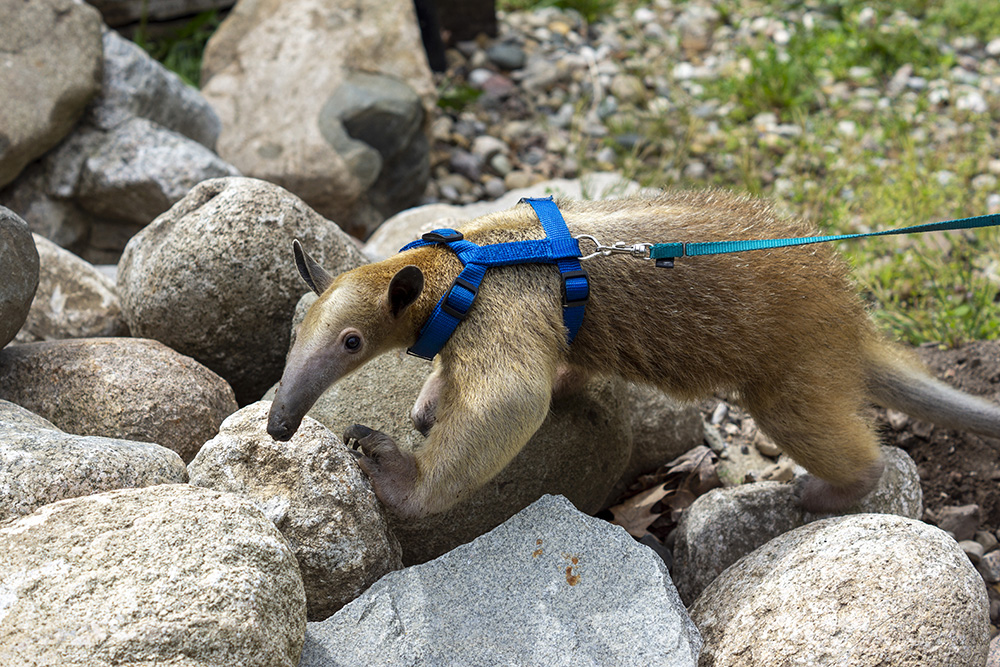Project Description

Southern Tamandua
Gongylophis colubrinus
Animal Class: Mammal
Length: 28-41 inches
Weight: 3-19 pounds
Lifespan: 7-9 years in the wild, longer in human care.
Diet: Predominately insectivore, with occasional fruit.
Habitat: Wet and dry forests of Eastern South America.
Description: Southern tamanduas are also known as lesser anteaters. They’re smaller, arboreal relatives of the giant anteater. They have a prehensile tail, which helps them climb trees, as do their strong, long claws. They also use their claws to dig into trees to hunt for insects and to defend themselves.
Tamanduas don’t have teeth. They use their long, sticky tongue to find and lick up their food.
Southern tamanduas prefer to be solitary outside of mating and raising young. Female tamanduas give birth to a single pup that rides on the mother’s back for up to a year.
Conservation Status: Least Concern
Our Animals: Franklin, Olive, and Pimento


